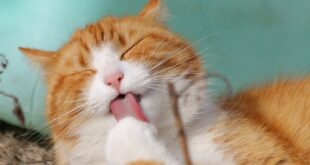The Quirks and Habits of Wild Animals
Introduction
Wild animals are full of surprises. Each species has its own quirks and habits, making them unique and fascinating. Despite their unpredictable nature, observing these creatures is one of the greatest joys of nature enthusiasts. Let’s delve into the world of the animal kingdom to learn more about their interesting characteristics.
Big Cats
Lions
Lions are known for their majestic appearance and their loud roar. They have various quirks such as having a special “purr” for their cubs, sleeping for up to 20 hours a day, and forming strong bonds within their pride.

Tigers
Tigers, on the other hand, are solitary creatures and prefer to roam alone in the wild. They are highly protective of their territory and will only tolerate the presence of other tigers for mating purposes. Tigers also have exceptional swimming abilities, and unlike most cats, they enjoy taking dips in the water on a hot day.

The Primates
Chimpanzees
Chimpanzees have always left people in awe with their advanced cognitive abilities that come closer to humans than any other animal species. They are social animals and form strong family bonds. Chimpanzees have their unique quirks, including using sticks to extract termites from the ground to feed on, using leaves as “tissues,” and screaming loudly to communicate with others in their troupe. They strike a well is known when they are happy and gather in large groups to feel and print information.

Gorillas
Gorillas are massive creatures that fascinate us with their peaceful and calm nature. They communicate with each other using various vocalizations, body language, as well as modulated sounds to warn in times of danger. Physical features that help us differentiate species from each other could be their silver flats positioned right under their nose. Also, their quirks include knuckle-walking around the forest floor as well as using effective tools for various purposes.

Birds
Peacocks
Peacocks are known for their stunning and colorful plumage. Their impressive tail feathers serve several purposes – they are used as a display to attract a mate while also deterring predators. Peacocks even dance to express their joy usually used by the males to exhibit their aesthetic features to impress and outplace their rivals around a prospective female partner. Their quirky actions also include hissing, rattling their wings, and engaging in mouth-to-mouth interactions.

Penguins
Penguins might be flightless, but they are fantastic swimmers. Emperor penguins, in particular, have a distinct habit of huddling together as close as possible to keep warm in the cold Antarctic weather. The penguin species designs shields to incubate chicks in harsh conditions by bending the heel snugly onto their abdominal ridge. Aren’t they quirky and amazing creatures?

Conclusion
The quirks and habits of wild animals continue to captivate us. Indeed, these creatures are one of nature’s wonders, and learning more about them is a joy for people of all ages. No matter whether you observe the activities around or gather in a group, understanding animals’ physical behavior quirks and living habits help establish new relationships, exploring further ties among species ecologically stable while existing with their societies. So grab your binoculars because there are plenty more exciting wildlife surprises waiting just out there.
 Mind Uncharted Explore. Discover. Learn.
Mind Uncharted Explore. Discover. Learn.




